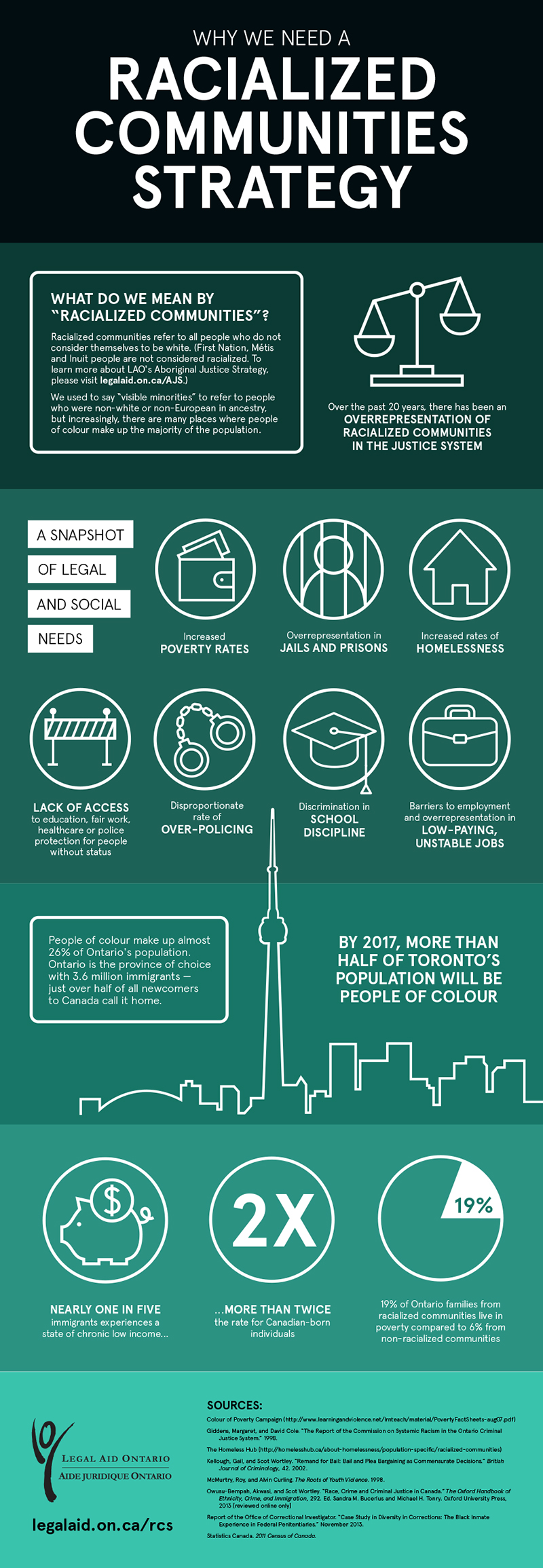Infographic: Overrepresentation of racialized communities in the justice system
The racialization of poverty
- A third of children from racialized communities live in poverty
- Workers from racialized communities in Ontario are paid 77.5¢ for every dollar earned by persons from non-racialized communities
- 19% of Ontario families from racialized communities live in poverty compared to 6% from non-racialized communities
Higher jail admissons
- People from racialized communities are overrepresented in Ontario’s youth and adult jails
- 4X more black Canadian boys (aged 12 to 17) in the young male jail population than what they would represent in the general young male population
Racial profiling
Racial profiling is any action undertaken for reasons of safety, security or public protection that relies on stereotypes about race, colour, ethnicity, religion, or place or orging rather than on reasonable suspicion, to single out an individual for greater scrutiny or different treatment.
For example:
- A landlord asks a student to move out because she believes that the tenant will expose her to SARS
- A bar refuses to serve certain patrons because of an assumption they will get drunk and rowdy
- A police officer assumes someone is more likely to have committed a crime
- An employer wants a stricter security clearance for an employee after a terrorist attack
- A private security guard follows a shopper because she believes the shopper is more likely to steal from the store
Children in state care
- Higher proportion of children in state care
- 41% of youth in care of the Children’s Aid Society of Toronto are black…
- …even though only 8.2% of the city’s under-18 population is black
Sources:
- Ontario Human Rights Commission. Paying the Price: The Human Cost of Racial Profiling. 2003.
- Toronto Star. “Unequal justice: Aboriginal and black inmates disproportionately fill Ontario jails.” 2013.
- Toronto Star. “Ontario may collect race-based data on kids in care.” 2015.


